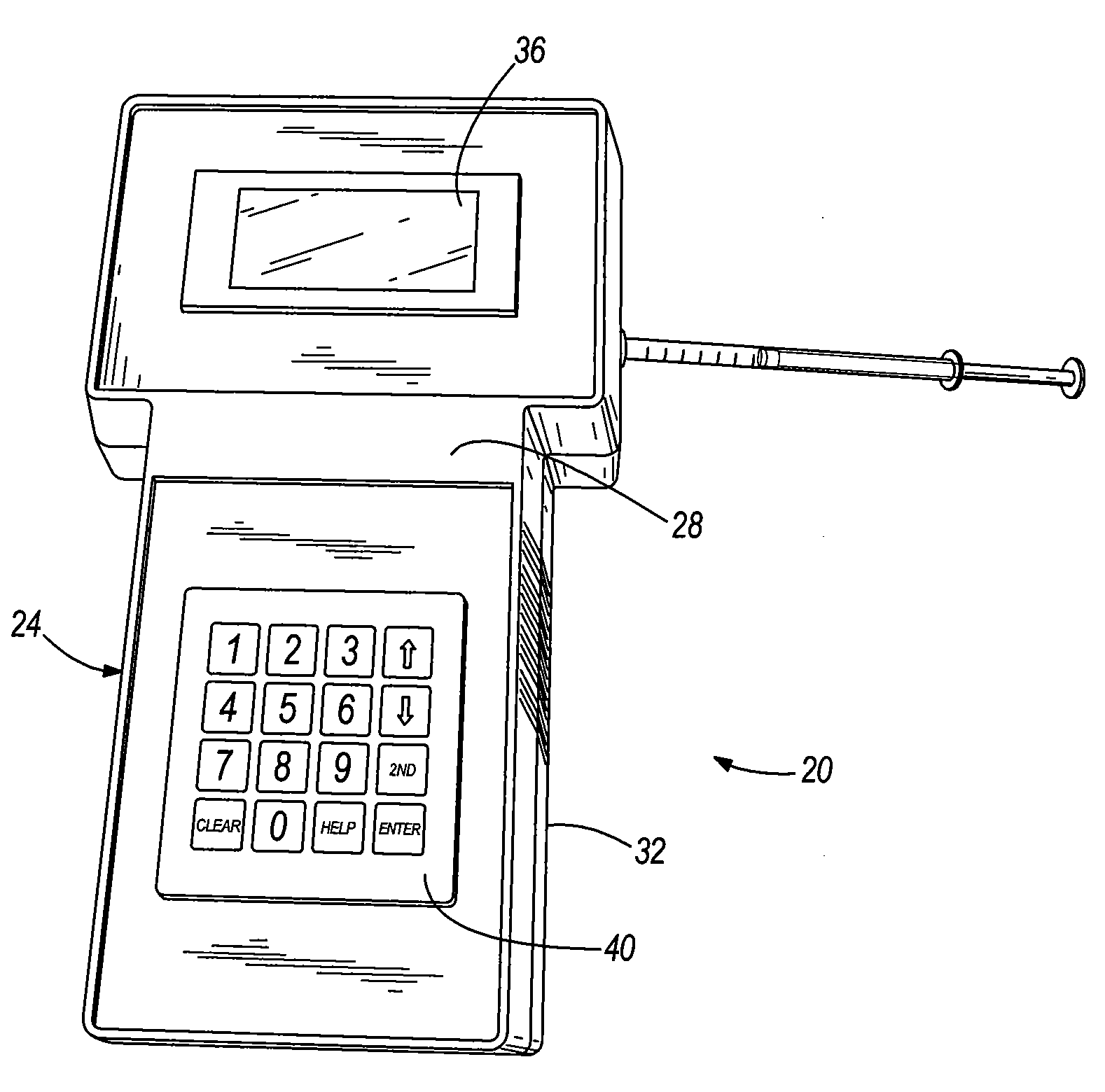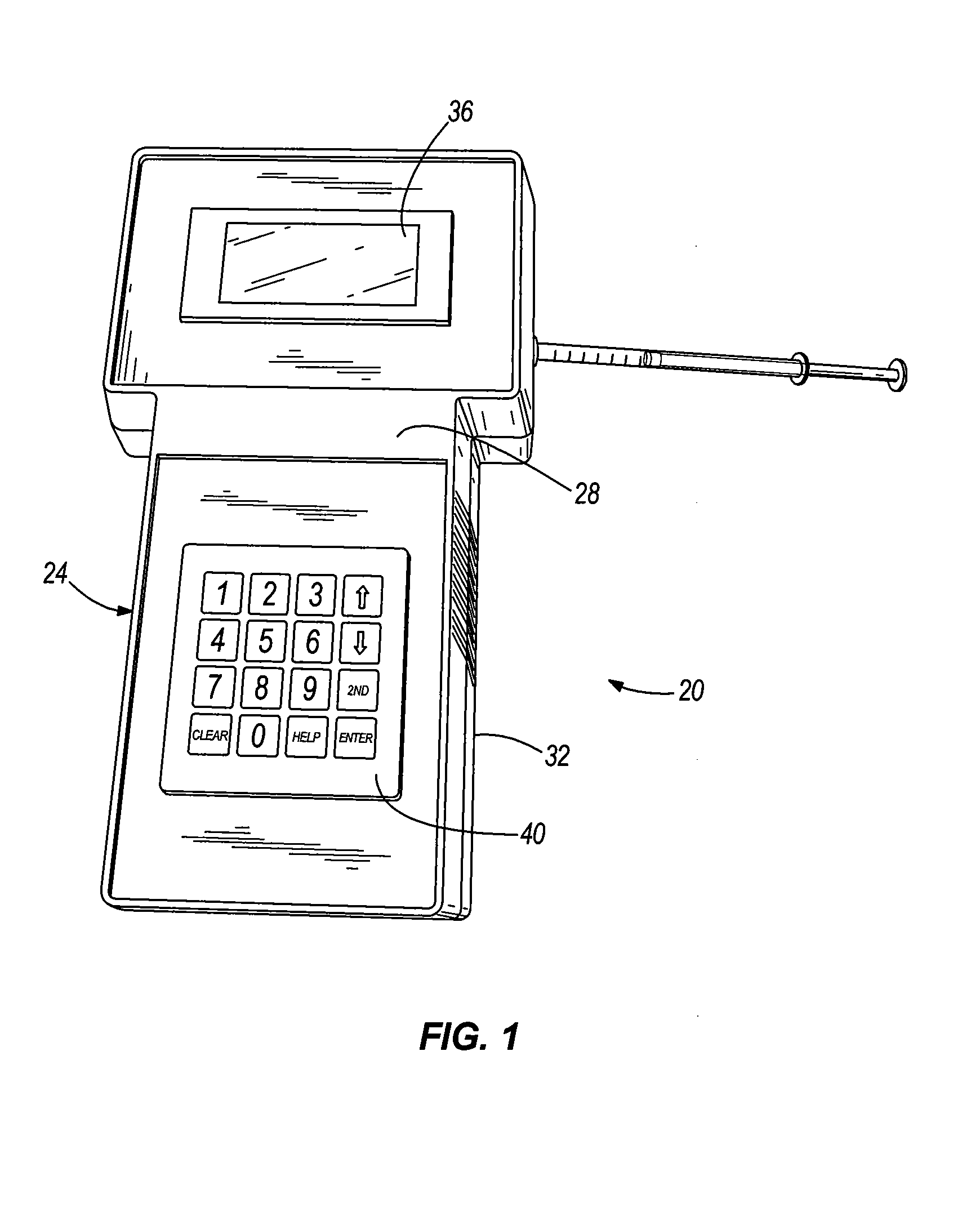Methods and systems for detection of contaminants
a technology for contaminants and detection methods, applied in the field of methods and systems for detecting contaminants, can solve the problems of time-consuming, inconvenient, and expensive techniques used to detect influenza, and achieve the effects of simple, rapid, robust and reliable tests, and rapid detection of influenza
- Summary
- Abstract
- Description
- Claims
- Application Information
AI Technical Summary
Benefits of technology
Problems solved by technology
Method used
Image
Examples
example 1
Materials and Methods
[0079]The following materials and methods were used throughout the Examples, unless otherwise indicated.
Culture and Plating of Bacteria
[0080]Frozen stock of E. coli O157:H7 (ATCC 43888) was maintained in brain heart infusion broth (BHI, Remel Inc., Lenexa, Kans.) at −70° C. The culture was harvested in BHI maintained at 37° C. for 18 to 22 h. For enumeration, pure cultures were serially diluted in 0.01 M, pH 7.4 phosphate buffered saline (PBS) and surface plated on sorbitol MacConkey (SMAC) agar (Remel Inc., Lenexa, Kans.), which was incubated at 37° C. for 20 to 22 h.
[0081]The avian influenza virus (H5N1) is produced by growth in chicken embryos and collection of allantoic fluid and killed by the National Veterinary Services Laboratory, Ames Iowa. The stock solution of virus contains approximately 1×107 egg-infectious doses (“EID”) per ml.
Chemicals and Reagents
[0082]PBS (0.01 M, pH 7.4) was obtained from Sigma-Aldrich (St. Louis, Mo.). Bovi...
example 2
Impedance Measurement of E. coli O157:H7
[0098]FIG. 17 shows a bode plot corresponding to impedances measured in the presence of 8.4×107 CFU ml−1 of E. coli O157:H7 with attached MNAC as well as a control (with MNAC only and no bacteria). Samples were injected into a microfluidic flow cell containing a label-free biosensor, which was used to measure impedances. Impedance measurements were made in 0.1 M mannitol. The impedance difference (represented by NIC in FIG. 18) showed an increasing trend (from 0.22 to 61%) in the region of 53 Hz to 16 kHz followed by the decreasing trend (61 to 6%) in the region of 16 kHz to 1 MHz. The maximum difference in impedance between measurements was in the bulk medium resistance region (1 kHz to 50 kHz) and peaked at 16 kHz as shown in FIG. 18.
example 3
Detection Limit of the Impedance Biosensor for the Detection of E. coli O157:H7 in Pure Culture and Ground Beef Samples
[0099]FIGS. 19A, 19B, 19C, and 19D show the measured impedance (measured using a label-free biosensor) for all concentrations of E. coli O157:H7 from 101 to 107 CFU ml−1 that are present in a pure culture and in ground beef samples. The impedance caused by bacteria was found to increase linearly with the number of cells in the sample. The polarization and insulating effect of bacteria on the biosensor surface only begins to change impedance at a concentration of 105 CFU ml−1 or higher for pure cultures and 106 CFU ml−1 or higher for samples mixed with ground beef. FIGS. 19B and 19D show a snapshot of the impedance at a frequency of 16 kHz and demonstrate that there were detectable, statistically-significant differences in the impedance between the control sample and bacterial concentrations from 105 to 107 CFU ml−1 in pure culture and 106 to 107 CFU ml−1 in ground b...
PUM
| Property | Measurement | Unit |
|---|---|---|
| frequency | aaaaa | aaaaa |
| frequency | aaaaa | aaaaa |
| width | aaaaa | aaaaa |
Abstract
Description
Claims
Application Information
 Login to View More
Login to View More - R&D
- Intellectual Property
- Life Sciences
- Materials
- Tech Scout
- Unparalleled Data Quality
- Higher Quality Content
- 60% Fewer Hallucinations
Browse by: Latest US Patents, China's latest patents, Technical Efficacy Thesaurus, Application Domain, Technology Topic, Popular Technical Reports.
© 2025 PatSnap. All rights reserved.Legal|Privacy policy|Modern Slavery Act Transparency Statement|Sitemap|About US| Contact US: help@patsnap.com



